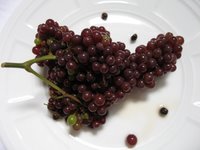
(Recipe courtesy of The Complete Organic Pregnancy, by Alexandra Zissu--to be released September 2006.)
Peter Hoffman is the owner and chef of Savoy Restaurant in New York City
"Caribbean folklore is that okra helps the baby come on and starts labor. My wife decided that she had had enough of being pregnant the second time around, so she ate a big jar of pickled okra (also took some castor oil, which certainly didn’t hurt) and she started her labor fast and furious,” recalls Peter. “One hour to be exact. And I delivered the baby on the front steps of our apartment.”

1 lb. small okra pods - cut off any darkened stems, but leave whole
½ tsp. dried red pepper flakes
2 tsp. mustard seeds
3 cloves garlic, halved
1 tsp. dill seeds
1 cup cider vinegar
1 cup rice vinegar
1 cup water
3 Tbs. kosher salt
1. Pack three 1-pint canning jars with the okra standing vertically, and alternating stems and tips. Put a halved garlic clove in each jar as well.
2. In a metal, non-reactive pot bring liquids to a boil. Add salt and spices. Allow to steep 20 minutes. Fill jars with the liquid to within ½ inch of the rim. Wipe rims and put on lids.
3. Put the glass jars on a rack in a deep kettle canner and cover with hot water by 2 inches. Bring to a boil, cover and boil for 10 minutes. Remove jars from the bath and leave to cool. Let pickles mellow for two weeks minimum before tasting. Best at 1 month.
Makes 3 pints







